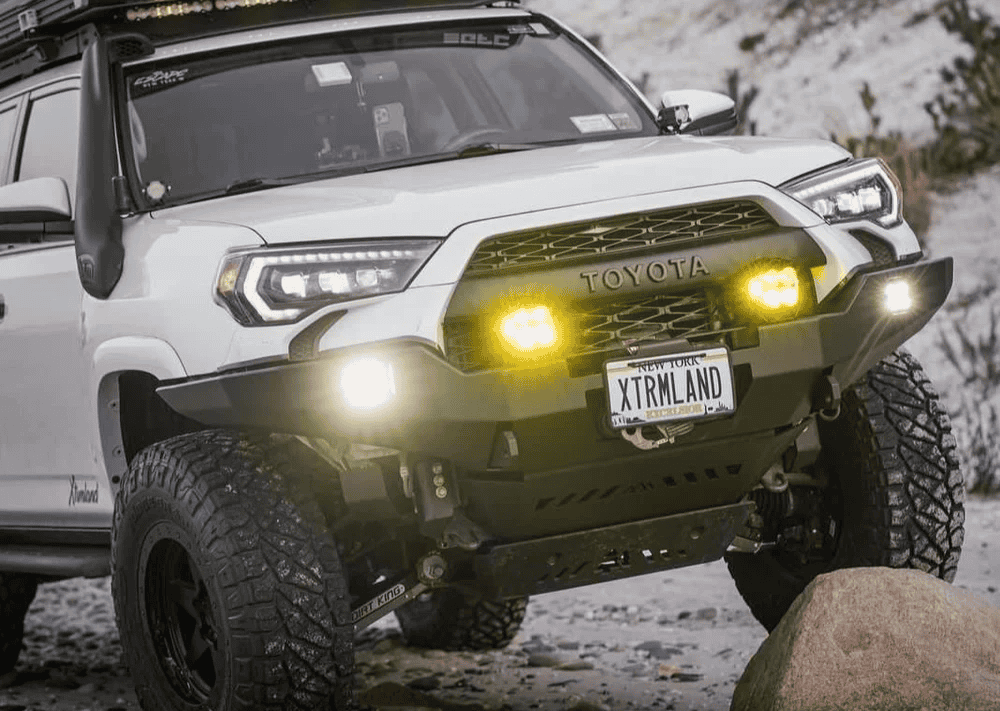Overland Vehicles

Powder coated metal fabrication combines precision formed parts with a baked polymer finish that resists chips and corrosion. The powder is a blend of resins, pigments, and additives that is electrostatically charged and sprayed onto grounded metal. After application, parts move to an oven where heat triggers flow and crosslinking, locking the coating into a dense, uniform film.
Prep makes or breaks the result. Clean metal is essential, so fabricators remove oil and mill scale with alkaline wash, media blasting, or both. Many shops add a conversion layer such as zinc phosphate or zirconium that promotes adhesion and improves salt spray performance. Masking protects threads and mating faces, and good racking ensures even coverage and minimal touch points.
Film thickness typically lands around two to four mils depending on part geometry and durability targets. Complex shapes need attention to the Faraday cage effect, where recesses are harder to coat. Skilled techs adjust voltage, gun settings, and booth technique to build uniform film on edges, corners, and cavities.
Surface profiles from blasting increase mechanical key, while chemical pretreatments add chemical bonding. Sharp edges should be broken with a radius to prevent thin film and early wear. Welds need spatter removal and full cleaning so contaminants do not telegraph through the finish.
Application parameters include gun voltage, powder flow, and booth airflow. Cure schedules are defined by part metal temperature, not just oven air temperature. Typical polyester powders cure near one hundred eighty to two hundred degrees Celsius for ten to twenty minutes at metal temperature, verified with probes or tags.
Compared to liquid paint, powder offers thicker builds in one pass, minimal runs, and strong edge coverage. With proper pretreatment, corrosion resistance in salt fog can exceed hundreds of hours and often reaches four figures for exterior grade systems. Polyester formulations provide superior UV stability for roof racks and exterior trim, while epoxy powders excel indoors with excellent chemical resistance.
Limitations still exist. Very tight corners are prone to low film due to field shielding, and heavy parts demand careful thermal profiling for complete cure. Touch up in the field uses compatible liquid systems rather than re baking. Texture and gloss affect perceived wear; matte hides scuffs, while high gloss shows every mark.
Common choices include epoxy for interior or chemical environments, polyester for UV exposure, and hybrids that balance properties. Texture ranges from smooth to fine wrinkle to heavy structure. Color control often follows RAL standards for repeatability across batches. For vehicle parts, polyester in matte or satin is a frequent pick for balanced UV performance and easy cleaning.
Good design sets the finish up for success. Add small drain and vent features where fluids collect so wash stages and oven outgassing do not cause defects. Avoid deep boxed sections without access for spray or airflow. Include grounding points in racks and fixtures. Round exposed edges, specify weld quality, and coordinate masking for threads and tight fits.
Quality control validates adhesion, thickness, and cure. Dry film gauges confirm coverage on flats and edges. Adhesion can be checked with crosshatch testing. Cure can be verified with solvent rubs and visual impact checks. When parts cool, inspectors review orange peel level, gloss, and coverage in hard to reach recesses.
Care is simple. Wash with pH neutral soap, avoid harsh abrasives, and spot repair chips promptly. For trail driven vehicles, a fine texture in satin hides brush contact and dust better than mirror finishes. If parts require recoating, stripping and full prep restore a uniform base before a new bake.
OZK applies these principles when engineering brackets, racks, bumpers, and interior hardware for demanding travel. Our team designs parts with proper radii, weld prep, and masking plans so the coating has the best chance to perform once the vehicle leaves the shop. When a build calls for powder coated components, we coordinate finishing schedules with trusted partners and inspect every part before install.
If you are planning an off road travel platform, learn how finish choices support performance on our See our overland rigs page. For tailored upgrades that integrate coated metalwork into a complete system, explore Custom overland upfit. To understand how we approach durability, process, and client service, read Why choose OZK Customs.
We build travel ready vehicles and components that stand up to real miles. Whether you need brackets that fit your layout or a full vehicle plan, our fabrication, CAD, and installation team can guide every step from clean design to finished, coated parts installed on your rig. Share your goals and we will craft a path that balances strength, weight, and finish quality so you can focus on the drive.
Ready to spec parts that survive real trails and daily driving. Share your build goals and let OZK map the right fabrication, coating, and install path for your vehicle.
ADDRESS:
6159 E Huntsville Rd, Fayetteville, AR 72701
PHONE:
(479) 326-9200
EMAIL:
info@ozkvans.com